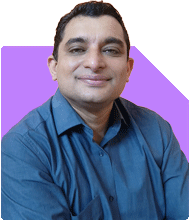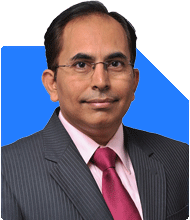Working couple with 2.5L income - How to build portfolio for retirement (8Cr)?
Ramalingam Kalirajan |10902 Answers |Ask -Follow
Mutual Funds, Financial Planning Expert - Answered on Jul 18, 2024
He has an MBA in finance from the University of Madras and is a certified financial planner.
He is the director and chief financial planner at Holistic Investment, a Chennai-based firm that offers financial planning and wealth management advice.... more

Hello Sir, Me & my wife is working in IT and have net in-hand salary of 2.5 L . Current Savings (MF - 18L, PPF - 8L, NPS - 2L), Monthly Savings (MF - 75k, PPF - 15k, NPS-1L (Yearly) ), Monthly Expense (Average 50k). Planning to buy a flat with 80L as loan for 10 Years and also planning a baby. Can you please suggest how can i build my portfolio for next 15 Years with retirement corpus in mind (8 Cr.)
Portfolio Analysis and Recommendations
Current Investments
Mutual Funds: Rs 18 lakh
PPF: Rs 8 lakh
NPS: Rs 2 lakh
Monthly Savings
Mutual Funds: Rs 75,000
PPF: Rs 15,000
NPS: Rs 1,00,000 yearly
Loan Considerations
Taking an Rs 80 lakh loan will impact your monthly cash flow. Assuming a 10-year loan tenure, your EMI would be approximately Rs 1 lakh per month.
Revised Monthly Budget
Income: Rs 2.5 lakh
Loan EMI: Rs 1 lakh
Expenses: Rs 50k
Available for Savings: Rs 1 lakh
Building a 15-Year Plan
Adjusted Monthly Savings
Mutual Funds: Rs 60,000
PPF: Rs 10,000
NPS: Rs 1,00,000 yearly
Emergency Fund: Rs 5,000
Investing in Mutual Funds
Equity Diversification: Allocate your mutual funds across large-cap, mid-cap, and small-cap funds for better diversification.
SIP Approach: Continue with SIPs for disciplined investing and benefit from rupee cost averaging.
PPF and NPS
PPF: Continue your contributions for tax benefits and assured returns.
NPS: Contribute Rs 1 lakh annually to benefit from additional tax savings and long-term growth.
Child and Family Planning
Education Fund
Systematic Investment Plan (SIP): Start a dedicated SIP for your child's education. Aim for a mix of equity and balanced funds.
Health Insurance
Family Floater Policy: Upgrade to a family floater policy to cover your wife and future child. Ensure adequate coverage for all medical needs.
Retirement Corpus
Target Corpus: Rs 8 Crore
To achieve your target, you need a well-diversified portfolio:
Equity: Continue with diversified mutual funds. Allocate a portion to mid-cap and small-cap funds for higher returns.
Debt: PPF, NPS, and fixed deposits for stability.
Gold: Invest in gold bonds or digital gold for diversification.
Steps to Follow
Review and Rebalance: Review your portfolio quarterly. Rebalance to maintain the desired asset allocation.
Increase Investments: Gradually increase your SIP amount as your income grows.
Tax Planning: Utilize tax-saving instruments like PPF, NPS, and ELSS funds.
Emergency Fund
Build an Emergency Fund: Keep at least 6 months of expenses in a liquid fund. This will help you manage any unexpected expenses without disturbing your investments.
Final Insights
Achieving an Rs 8 crore retirement corpus in 15 years is feasible with disciplined saving and smart investing. Adjust your savings post-loan, diversify your investments, and focus on long-term growth. Regularly review and rebalance your portfolio to stay on track.
Best Regards,
K. Ramalingam, MBA, CFP,
Chief Financial Planner,
www.holisticinvestment.in
You may like to see similar questions and answers below
Ramalingam Kalirajan |10902 Answers |Ask -Follow
Mutual Funds, Financial Planning Expert - Answered on Jun 29, 2024
Ramalingam Kalirajan |10902 Answers |Ask -Follow
Mutual Funds, Financial Planning Expert - Answered on Jul 16, 2024
Reetika Sharma |429 Answers |Ask -Follow
Financial Planner, MF and Insurance Expert - Answered on Sep 17, 2025
Dr Shakeeb Ahmed Khan |184 Answers |Ask -Follow
Physiotherapist - Answered on Dec 17, 2025
T S Khurana |538 Answers |Ask -Follow
Tax Expert - Answered on Dec 17, 2025
T S Khurana |538 Answers |Ask -Follow
Tax Expert - Answered on Dec 17, 2025
Janak Patel |72 Answers |Ask -Follow
MF, PF Expert - Answered on Dec 17, 2025
Ramalingam Kalirajan |10902 Answers |Ask -Follow
Mutual Funds, Financial Planning Expert - Answered on Dec 17, 2025
Samraat Jadhav |2511 Answers |Ask -Follow
Stock Market Expert - Answered on Dec 17, 2025
Ravi Mittal |678 Answers |Ask -Follow
Dating, Relationships Expert - Answered on Dec 17, 2025
Reetika Sharma |429 Answers |Ask -Follow
Financial Planner, MF and Insurance Expert - Answered on Dec 17, 2025
Purshotam Lal |68 Answers |Ask -Follow
Financial Planner, MF and Insurance Expert - Answered on Dec 17, 2025
Ramalingam Kalirajan |10902 Answers |Ask -Follow
Mutual Funds, Financial Planning Expert - Answered on Dec 17, 2025



























